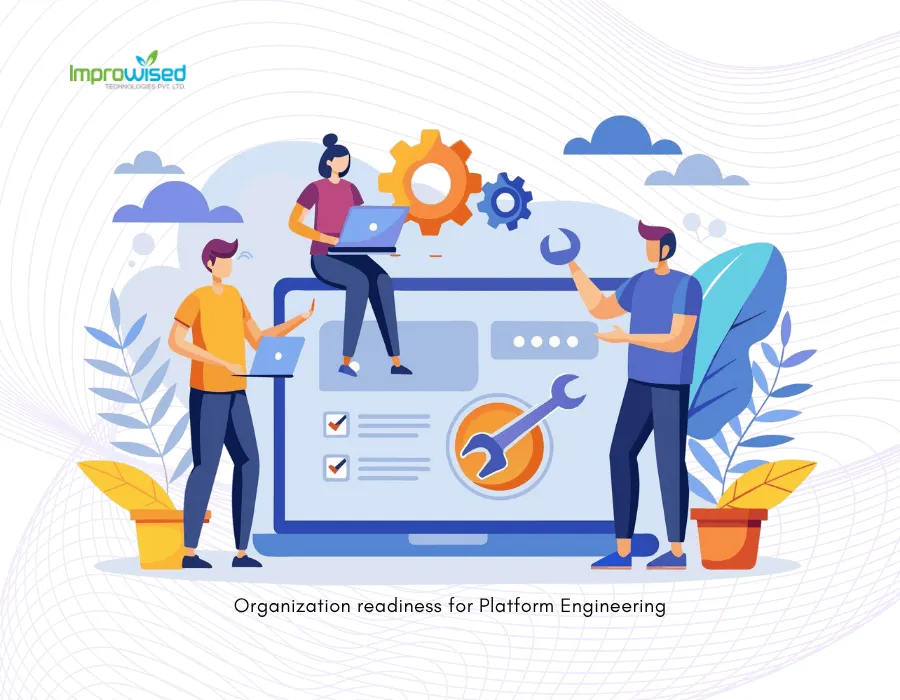September 22, 2025
Internal Developer Platforms Reduce Deployment Times by 2-3x

By Priyank Dhami
Improwised Technologies Pvt. Ltd.
Modern software development relies on speed and rapid iteration through frequent releases. Traditional deployment pipelines often create log jams due to broken workflows, unstandardized environments, and manual approvals. Internal Developer Platforms (IDP) streamline the deployment pipeline through automation, environment standardization, and policy-based governance. This article describes how IDPs reduce deployment time to 2-3x’ faster.
Infrastructure Abstraction and Standardization
IDPs provide an abstraction layer over infrastructure, allowing developers to define infrastructure and application specifications without needing to touch provisioning tools. IDPs leverage declarative configuration and templated definitions to provide a consistent development environment for developers, which eliminates variations in infrastructure definitions that often lead to failed deployments or rework.
Infrastructure as Code (IaC) templates in the IDP provide a way to define our infrastructure, standardized environments keep those definitions consistent, and automated provision through configuration scaffolding helps push deployments through faster.
Automated Workflow Execution
Most traditional deployment processes will include human intervention at some stages in the lifecycle, and each human action adds days to weeks of delay. Internal Developer Platforms integrate automated workflows that are made up of predefined tasks that make several common deployments repeatable (building, testing, security scanning, and deployment). Oftentimes, due to the nature of a scripted workflow, they draw on a level of human error that deployments can be made consistent.
An internal continuous integration and continuous development (CI/CD) process integrated into the IDP accelerates deploying solutions, policy-based approvals give the publisher control over their area of the IDP, and automated rollback processes help to mitigate the failed impacts of deployments.
Dependency and Configuration Management
A prerequisite to development can often be a lag in user acceptance when application things are abstracted and configured differently for each environment. Internal Developer Platforms create consistency throughout an application’s lifecycle and when coordinating on an application build. IDPs help to manage application dependencies, secrets, and environment variables in a centralized development workspace, creating more predictable deployments. Centralized Secret management with version control handles secrets securely, dependency resolution and cache allows for optimized builds, and configuration drift detection will ensure you stay desired.
Self-Service Developer Portals
IDPs allow developers to push applications based on infrastructure via self-service developer portals. Self-service is a delivery provisioning workflow that will eventually be a part of the machine workflow itself, which is ideally a black box to the developer, with the automation completing the required tasks. The self-service portal will have predefined workflows that abstracts the workflow complexity and complexity takes care of the underlining tasks of deploying services and requesting of environments.
Utilizing role-based access control (RBAC) for deployment permissions, automated provisioning to eliminate manual effort, and a service template that replaces running custom scripts for deployment.
Observability and Feedback Loops
Performance is directly linked to deployment, plus any feedback or observability tools you blend in to connections. IDPs enable performance by knowing what tools you can blend in through monitoring, logging, and tracing, and performance insights from the deployment. This allows teams to establish performance-based processes based on deployment feedback observations.
The combination of the above six elements gives you operational visibility of the environment and control over actions you can take. You get immediate visibility of your deployment health through elapsed time status metrics and tracking of status. Log aggregation with distributed tracing gives you troubleshooting at the operational run level and integrates packages of alerting for automated alerting, detector packages for anomalies, helping to identify probable issues, and change-in-state issues.
Policy Enforcement and Governance
Security and compliance create complexity with additional steps in the workflow. IDPs work as policy enforcement that can be done programmatically or through other mechanisms, lessening the load in compliance checks or manual security reviews.
Utilizing Policy-as-Code for access and security, automated validation of compliance checking, and encryption of all policy-related actions with audit logging for anti-regulatory and regulatory documentation.
Conclusion: Consequences of Not Embracing IDPs
Organizations that do not venture down the IDP path are led into a number of downsides, such as longer deployment time for applications brought about through a fragmented application lifecycle, increased duration through inconsistent configuration, and longer average cycle times with mostly manual approvals. Without all aspects of deployment workflows through automation and standardization, deployments are prone to errors, with further implementation points of rollback loops and incidents in production. Without self-service, organizations are forced to go through DevOps teams for implementations, creating further bottlenecks because of staff capacity. Without any observability of tooling, deployments cause unknown failures in production, and immature investigation troubles of time to require remediation will be less efficient.
IDPs define clear measures for improvements on deployment speed, operational efficiency, and system resilience that are deployed at scale, the tempo increases, and the need for the developers to iterate faster can be restored so that the risks are reduced, stability is increased across all environments, and overall manual effort is reduced to no operator requirement. An absence of an IDP will handcuff scale, limit productivity in the engineering community, and work in the best interests of optimizing the deployment process.
Faster, more reliable deployments don’t happen by accident-they’re built on the right platform foundations. Explore how teams collaborate with Improwised Technologies to get there.
Visit www.improwised.com

November 7, 2025
How to Troubleshoot Kubernetes: Identify and Fix Issues Like a Pro

By Shyam Kapdi
Improwised Technologies
Pvt. Ltd.

November 5, 2025
7 Signs Your Organization Needs Platform Engineering

By Priyank Dhami
Improwised Technologies
Pvt. Ltd.


By Shyam Kapdi
Improwised Technologies
Pvt. Ltd.
Optimize Your Cloud. Cut Costs. Accelerate Performance.
Struggling with slow deployments and rising cloud costs?
Our tailored platform engineering solutions enhance efficiency, boost speed, and reduce expenses.
